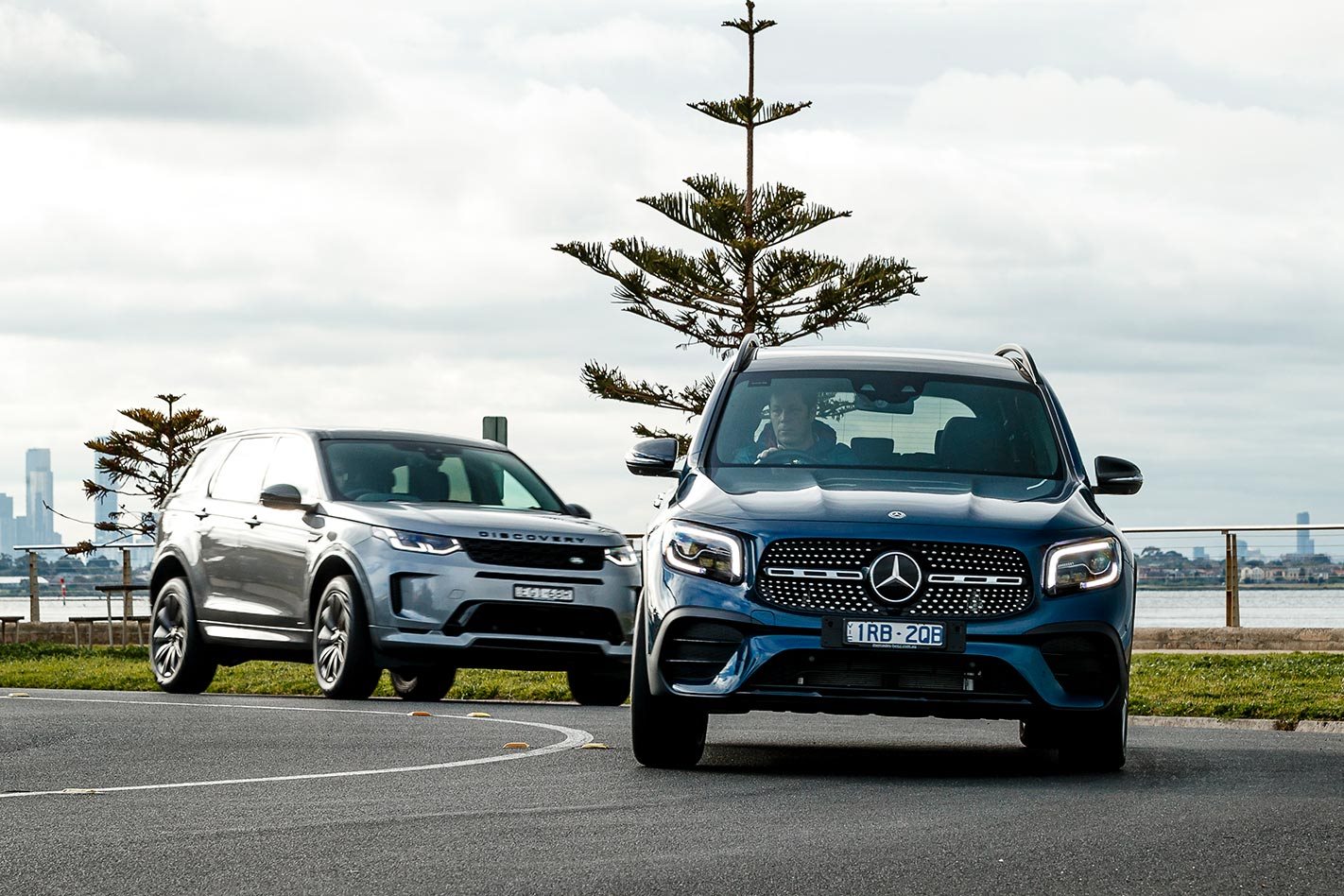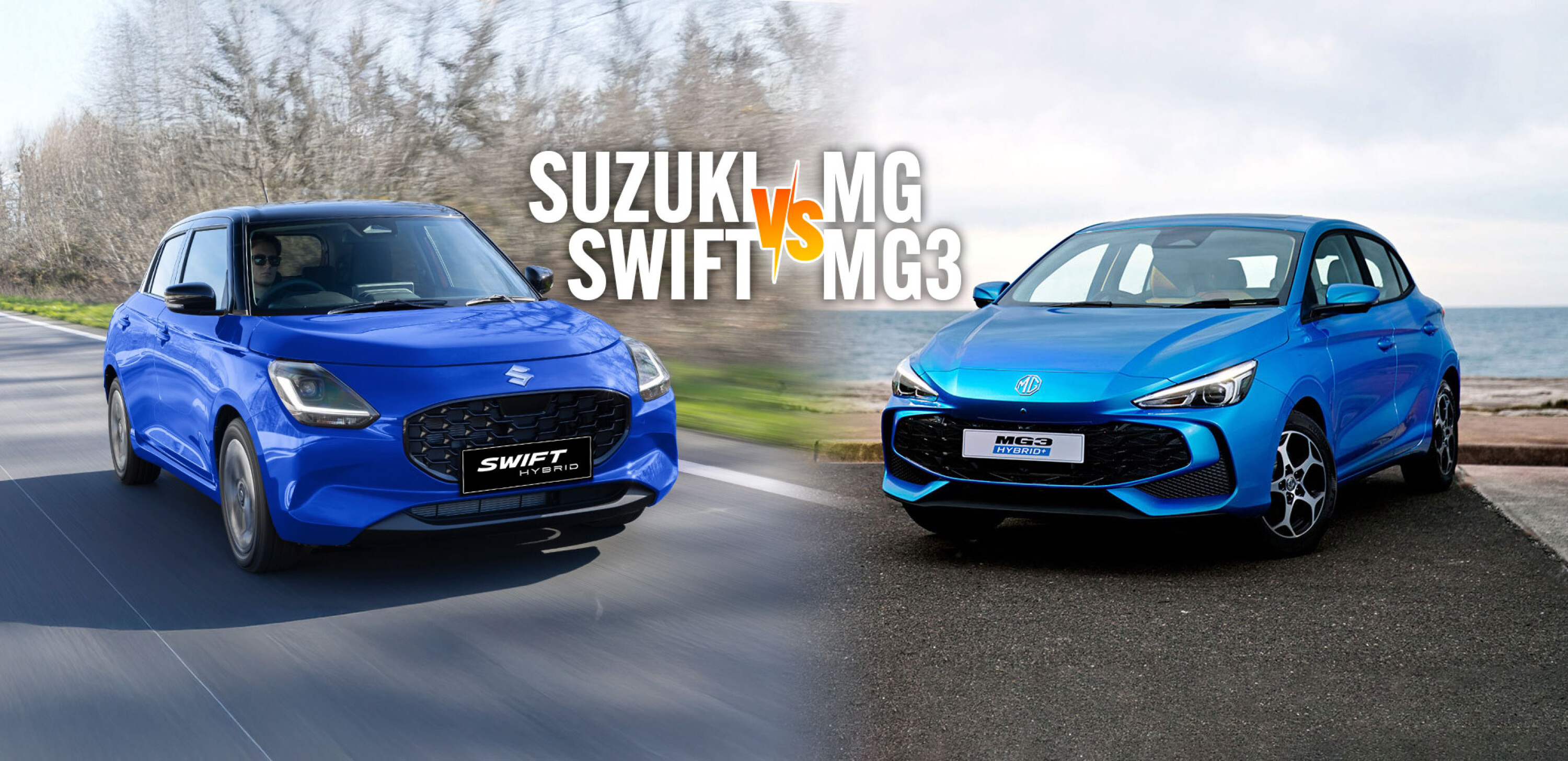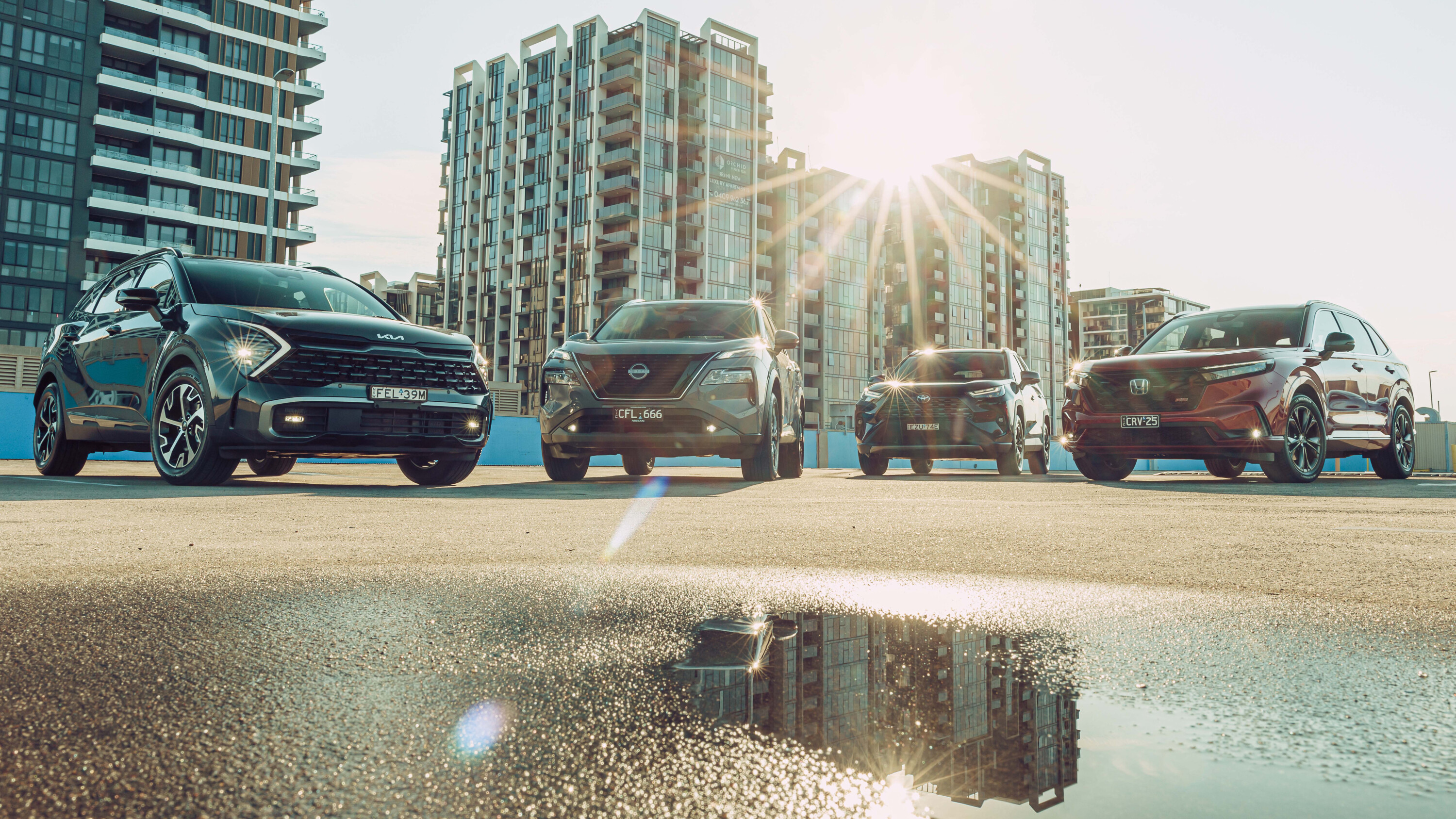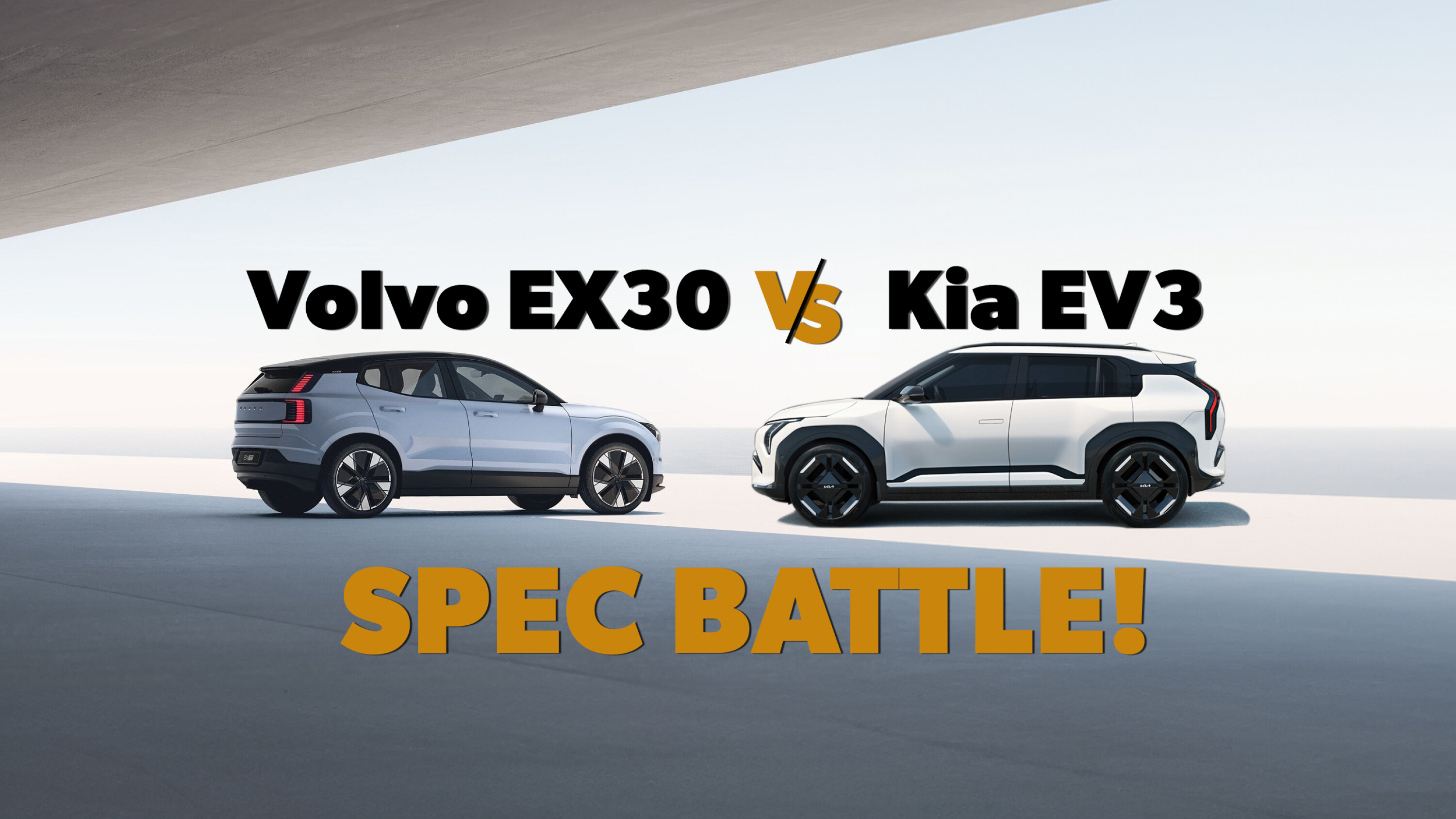For many, the concept of good design is somewhat esoteric. If done properly, good design is invisible, so how we interpret and interact with it is – as fictional lawyer Dennis Denuto from The Castle so eloquently states – down to “the vibe of it”.
For new car buyers, the segments most keenly impacted by good, and bad, design are SUVs. Built to cater to the varied demands and needs of a modern family, the smaller the SUV, the greater the need for design ingenuity. Put seven seats into the compact packaging required for inner-city living, and well, that’s one hell of a design challenge.
Enter the Mercedes-Benz GLB and Land Rover Discovery Sport, a pair of compact SUVs that must simultaneously attract a high-paying customer with a refined aesthetic, while packaging seven seats into a (relatively) small platform.
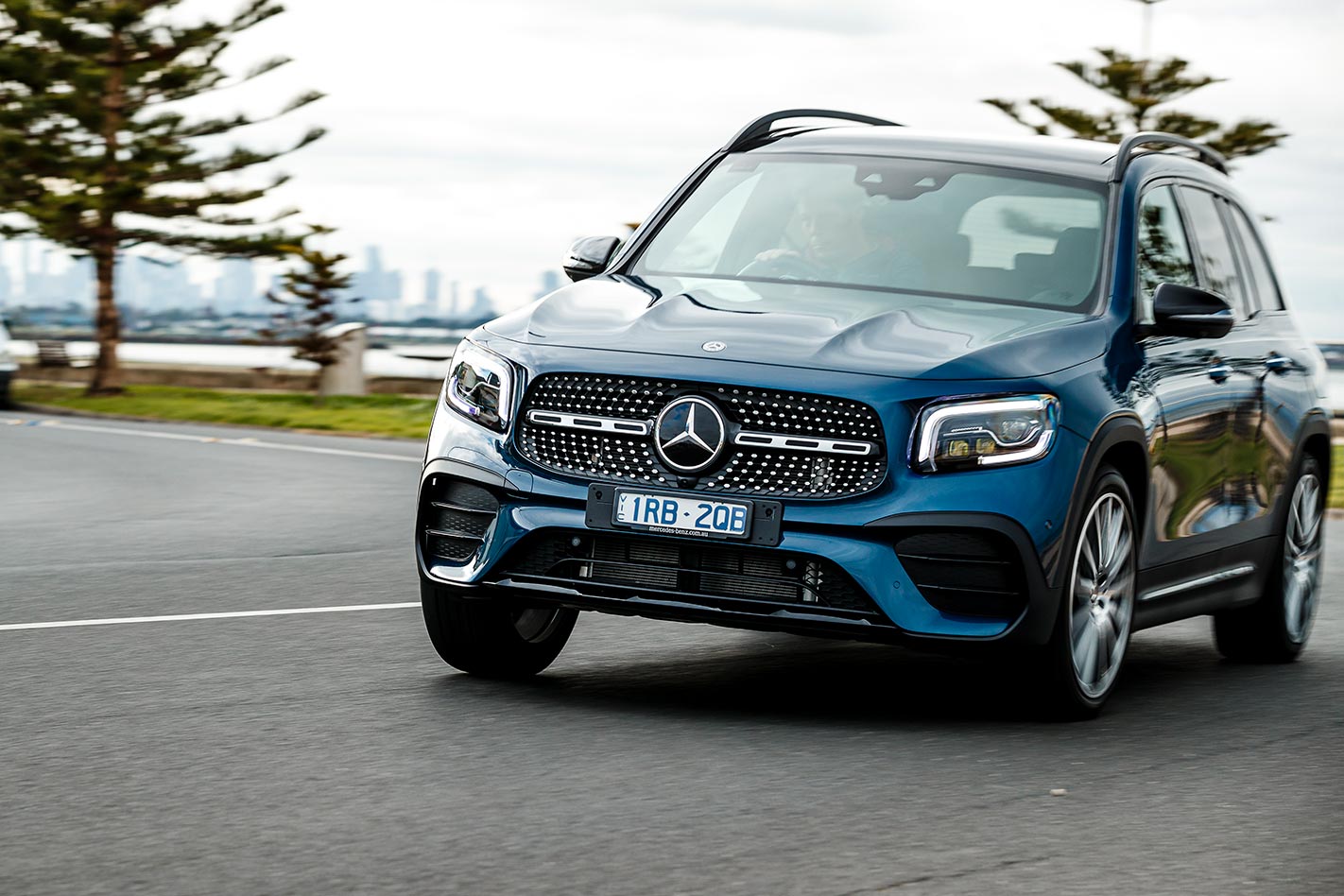
The GLB is the newer of the pair, entering the Australian market in the past month with two variants: the entry-level front-drive 200 ($59,900) and more powerful all-wheel drive 250 tested here ($73,900). An AMG 35 sports flagship will also be available by the end of the year.
Built on the same MFA2 small-car platform as the A-Class, CLA, B-Class, and GLA, the GLB is the largest of Mercedes’ compact family and comes fitted with seven seats as standard. It’s easy to dismiss the GLB’s existence as a niche-filling exercise dreamt up in a boardroom – every third Mercedes-Benz sold globally is an SUV, with every fourth being a compact car, so blending the two is a marketing no-brainer – but there is real merit to the GLB in the real world.
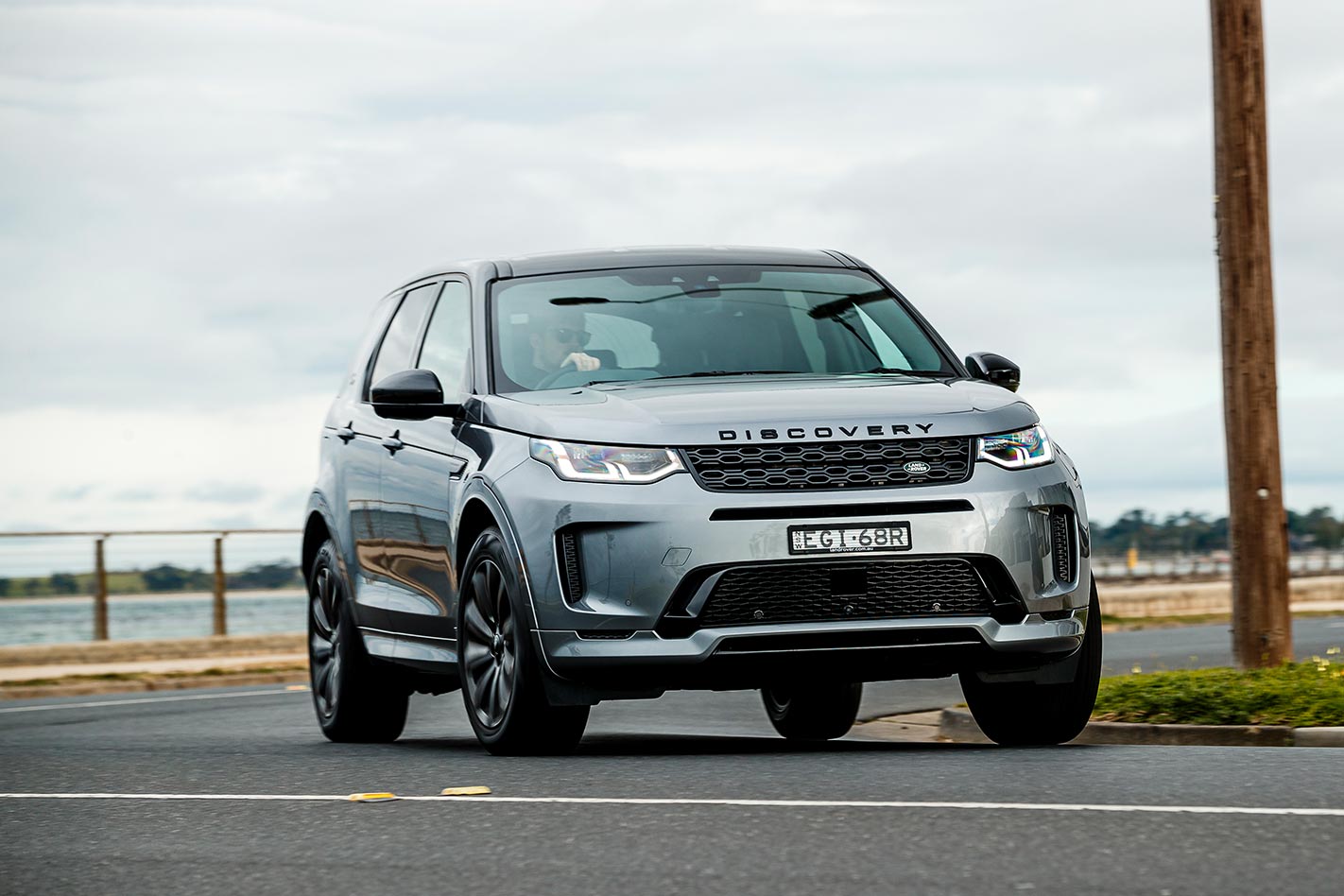
The flagship (for now) GLB 250 4Matic starts at $73,900 but the car we drove had more than ten grand added to the as tested price, with almost every option pack fitted resulting in an $86,830 price tag. Ratcheting up the cost is optional paint and 20-inch wheels ($1490/$1290), as well as a glut of option packs – AMG exclusive ($2490), Communications ($2490), Driving Assistance ($1990), Sports ($1990), and Vision ($1190).
While the optional extras add to our GLB tester’s profoundly lux feel, they aren’t entirely necessary, with Mercedes-Benz giving the 250 a generous slug of standard kit. Adaptive dampers, heated/power front seats, a sliding and reclining second row, third row ventilation, panoramic sunroof, LED headlights, keyless entry, twin 10.25-inch digital screens, wireless phone charging, smartphone mirroring, 360-degree parking camera, the Mercedes Me connect and MBUX infotainment systems, and adaptive cruise are all fitted without the need to bother the options list. In fact, you could get by without any of the option packs fitted. The one caveat would be the Driver Assistance package, which adds Mercedes-Benz’s full suite of driver safety aids and semi-autonomous systems. It would be nice for this feature to be included as standard – customers shouldn’t have to pay extra for safety tech.

Under the bonnet is the same engine as hatch sibling the A250, with the 2.0-litre turbocharged petrol four-pot sending 165kW and 350Nm to the ground via an eight-speed dual-clutch. It’s a fruity and energetic engine; not sporty, but with enough gusto to crack 100km/h in a brisk-ish 6.9 seconds. The gearbox is inoffensive, with smooth take-off at low speeds and slurring subtly through ratios in the background during normal driving.
Being a niche segment, the GLB’s native rivals are thin on the ground but that doesn’t mean the three-pointed star will have things easy. Enter the British competition – the Land Rover Discovery Sport.

First introduced in 2014, the ‘baby Disco’ came in for a mid-life facelift late last year which added welcome styling and tech upgrades. The Discovery Sport R-Dynamic SE D180 (what a mouthful!) we have on test starts at $70,510, but this particular model has a $78,011 sticker price after some considered box-ticking from JLR’s local press office.
As standard, this Discovery Sport variant is fitted with 19-inch alloys, LED headlights (at last), 12-way power adjustable front seats, manual sliding and reclining second row, two-zone climate control with second row vents, suede seat trim, 10-inch infotainment touchscreen, digital instruments, Apple CarPlay/Android Auto, adaptive cruise control and JLR’s full suite of safety and off-road tech. Extra value comes in the form of a black exterior pack ($1590), metallic paint ($1400), black contrast roof ($920), keyless entry ($900), heated electric memory front seats ($810), privacy glass ($650), JLR’s clever ClearSight camera-based rear view mirror ($551), a 360 degree parking camera ($410), cooling vents in the third row ($150), and a wireless phone charger ($120).
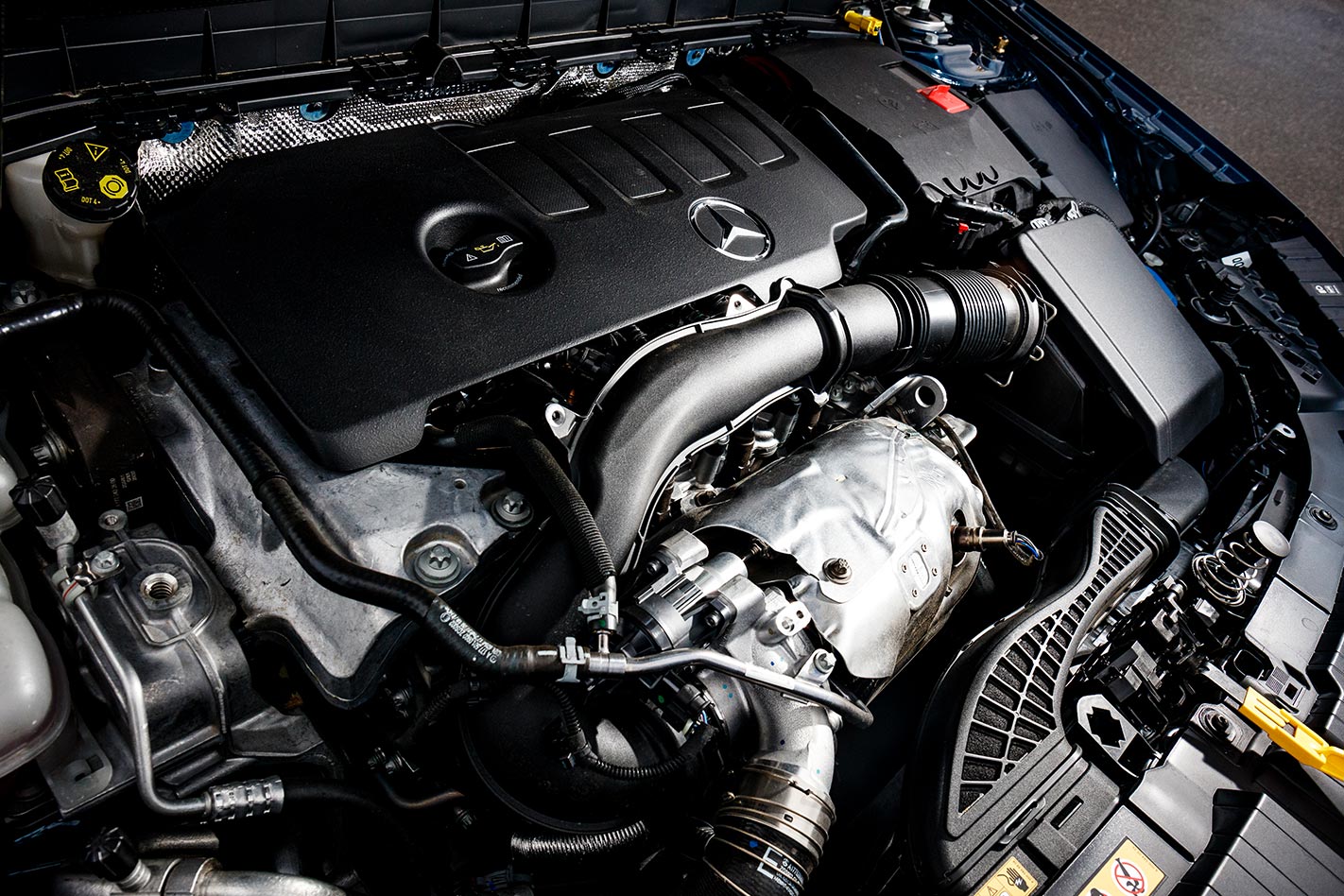
Land Rover does offer the Disco Sport with a 2.0-litre turbo petrol in multiple tunes, but the engine we have here is the 2.0-litre diesel. Paired with a nine-speed auto it sends 132kW/ 430Nm to all four corners. This unit has an obvious low-end torque advantage over the Merc but it takes 10.1sec to 100km/h and the gearbox calibration is best described as lazy. It holds onto gears for a long time after bursts of acceleration and can be reluctant to shift down when overtaking – resulting in a flare of revs and a drop of several ratios once the throttle is reapplied.
The exterior design of the pair is a story of two diverging paths. The Discovery Sport is more athletic and bold, while the GLB has a utilitarian, almost brutalist flavour thanks to its boxier silhouette. Personal taste will dictate your preference but inside the Merc’s practical focus shines through.
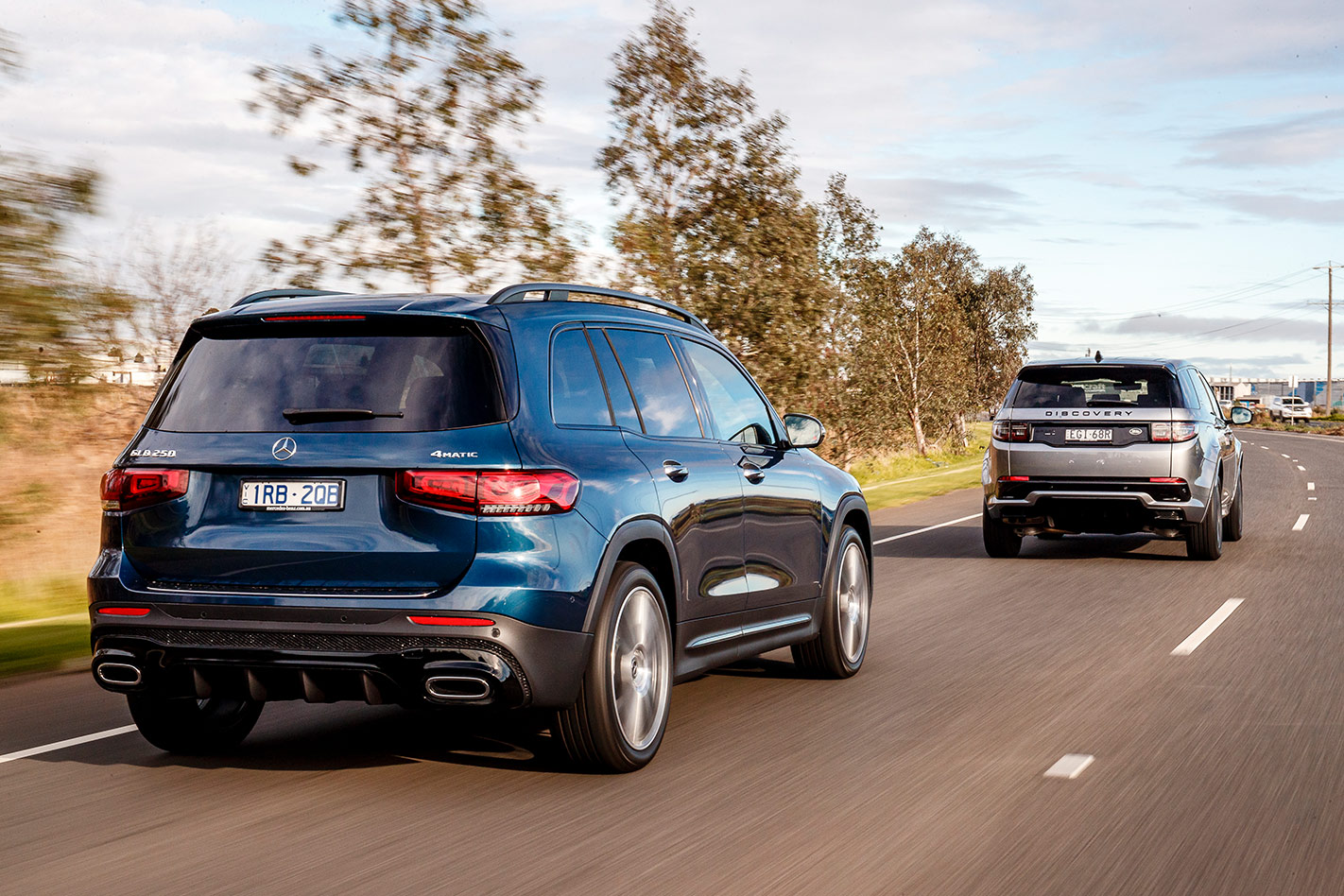
The glasshouse is tall and vision is excellent for first- and second-row occupants. While the standard panoramic sunroof eats up some of the headroom, a six-footer won’t feel cramped in either of the front two rows. There is ample legroom with the second row slid to its most rearward position, and the cabin feels airy. The powered tailgate opens high enough for tall adults to stand underneath without hunching and the 560-litre boot has a lower lip than the Discovery (which offers up to 689 litres of cargo space). There are also dual USB-C ports for each row of seating.
Unfortunately, the Disco Sport has some design foibles that see it fall short of the GLB’s polish, like the lack of USB ports beyond the first row, or the fact the second-row windows only lower two-thirds of the way where the GLB’s can be lowered completely.

While both vehicles come with seven seats as standard, the third row in each is best left for part-time use. And hang a ‘kids only’ sign above the most rearward seats as adult occupation is almost entirely off the table. Of the two, the GLB’s third row is the better executed. Air vents are standard (they’re optional in the Land Rover), there’s storage for phones in the side panels, and you can stow the parcel shelf under the floor when the extra seats are used – you’ll need to find space elsewhere for the Disco’s shelf.
As standard, the GLB 250 rides on 19-inch wheels with chunky 55 profile sidewalls, but even on the optional 20in wheels with 235/45 rubber, the ride is wonderfully compliant. Around town, the GLB’s ride refinement is excellent, with the engineers taking a keen eye to ensuring the SUV handles the bumps and challenges of a modern urban environment with confidence. With the adaptive dampers in their softest setting, you’d be forgiven for thinking the car was fitted with air suspension as it wafts gently down the road. Thankfully, it avoids the under-damped pogo-esque nature of its GLC and GLE siblings, instead returning to the level with relative poise after large bumps.
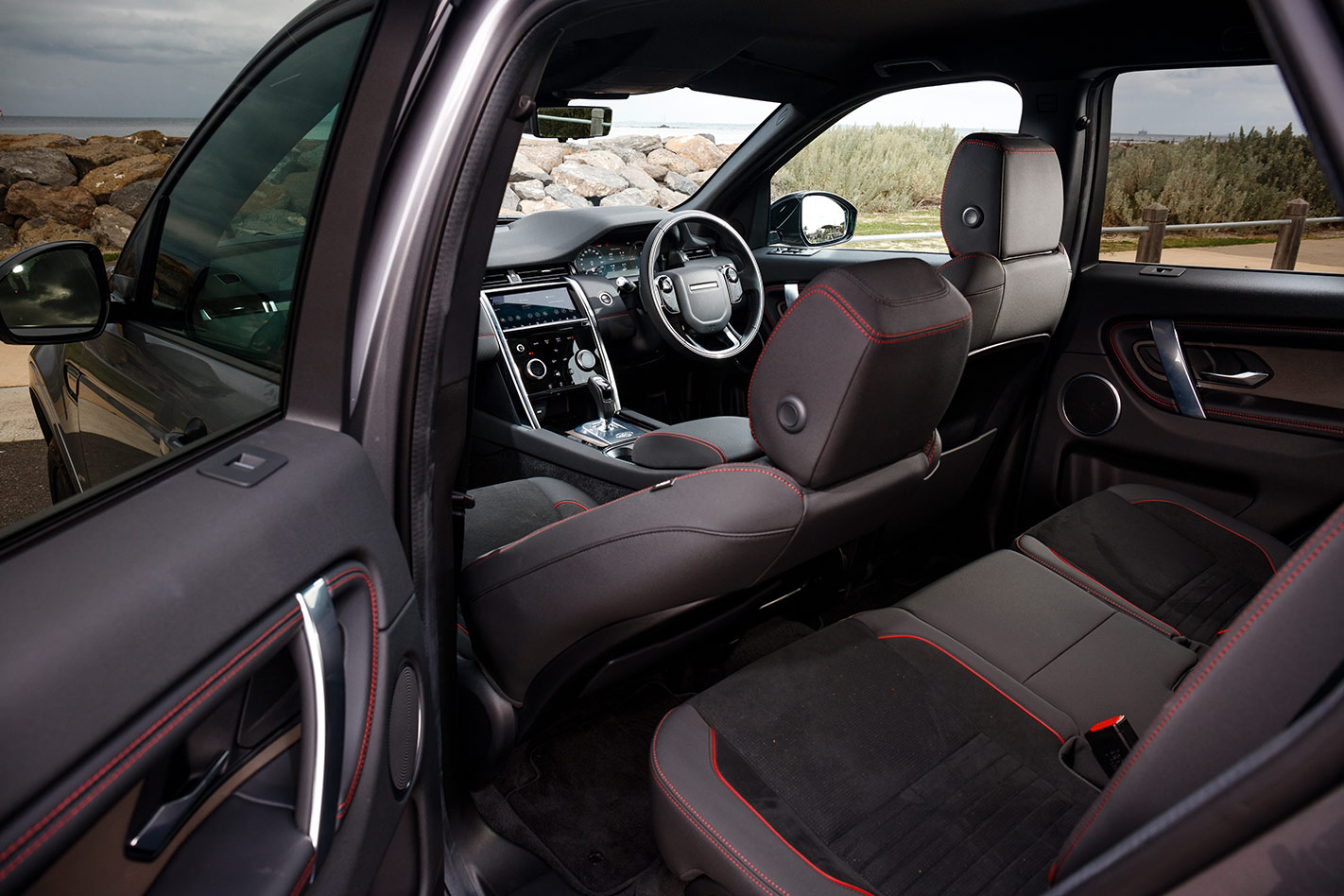
Somewhat surprisingly, the Discovery Sport is the firmer riding of the pair, with JLR’s engineers firming up the damping in the initial moment of compression. The primary ride is sportier but it retains a more confident rebound on big compressions compared to the GLB. Calling the Land Rover’s ride harsh is a disservice – it just doesn’t have the wafting air-like nature of the Merc. And while the GLB is the better sorted vehicle around town, the Discovery Sport really has no right to be as well refined as it is given its clear advantage off-road. Kudos, JLR.
Though Land Rover has done a great job of making the updated Discovery Sport feel considered and genuine, it can’t escape the fundamental age difference in this comparison. Six years of chassis and platform development allows the GLB to make better use of its space.
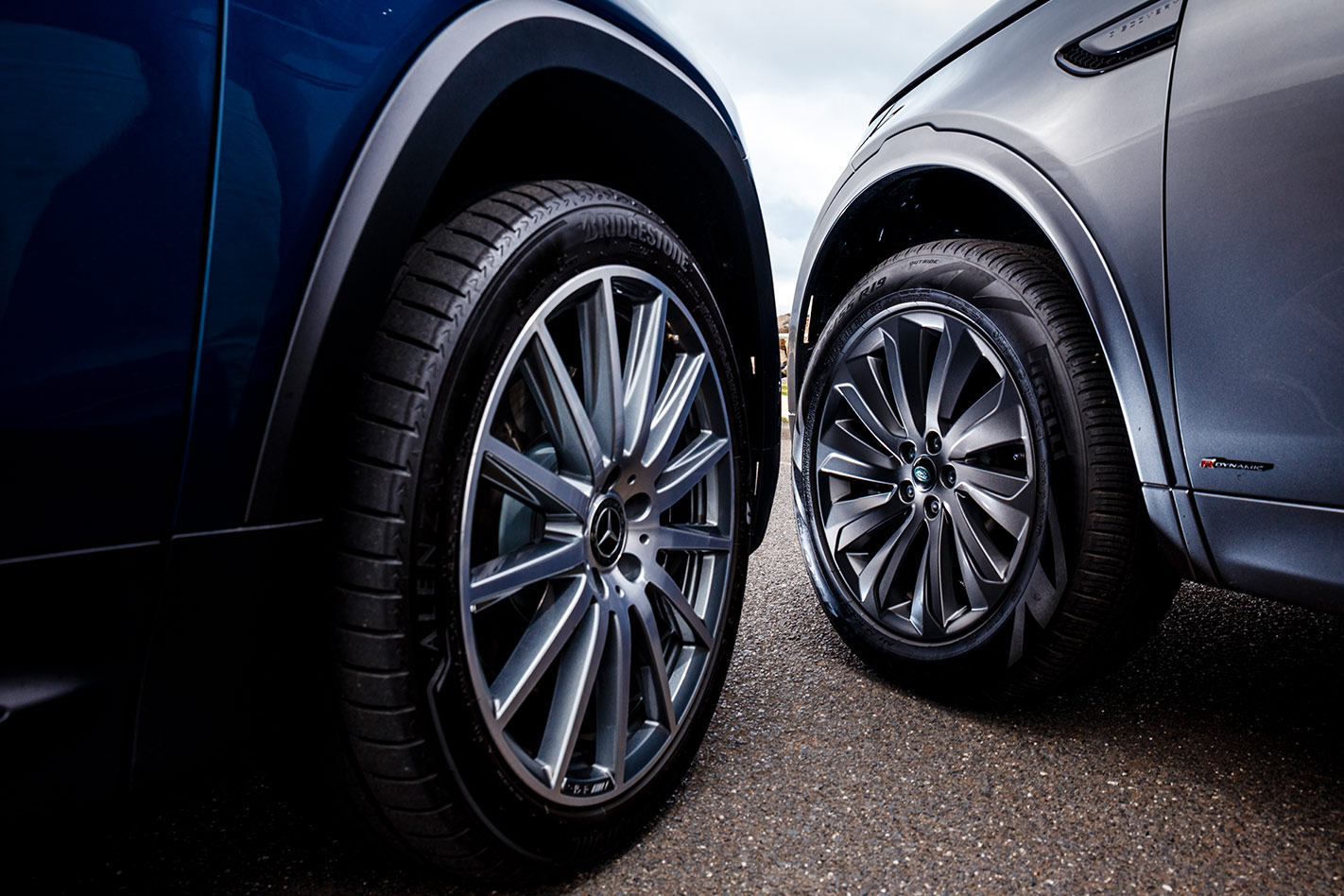
The GLB has the nicer engine, the more pleasant suspension tune, an airier cabin, and is friendlier and more intuitive to use. It’s also more expensive, especially if you opt for a petrol-powered Disco Sport – the P250 SE costs less ($67,825) and has more power and torque due to 184kW/365Nm outputs.
And yet, the GLB remains the better SUV. It is fundamentally well-engineered, cleverly designed and thoughtfully packaged. It will also continue to surprise and delight throughout the ownership experience. That is what good design is about.
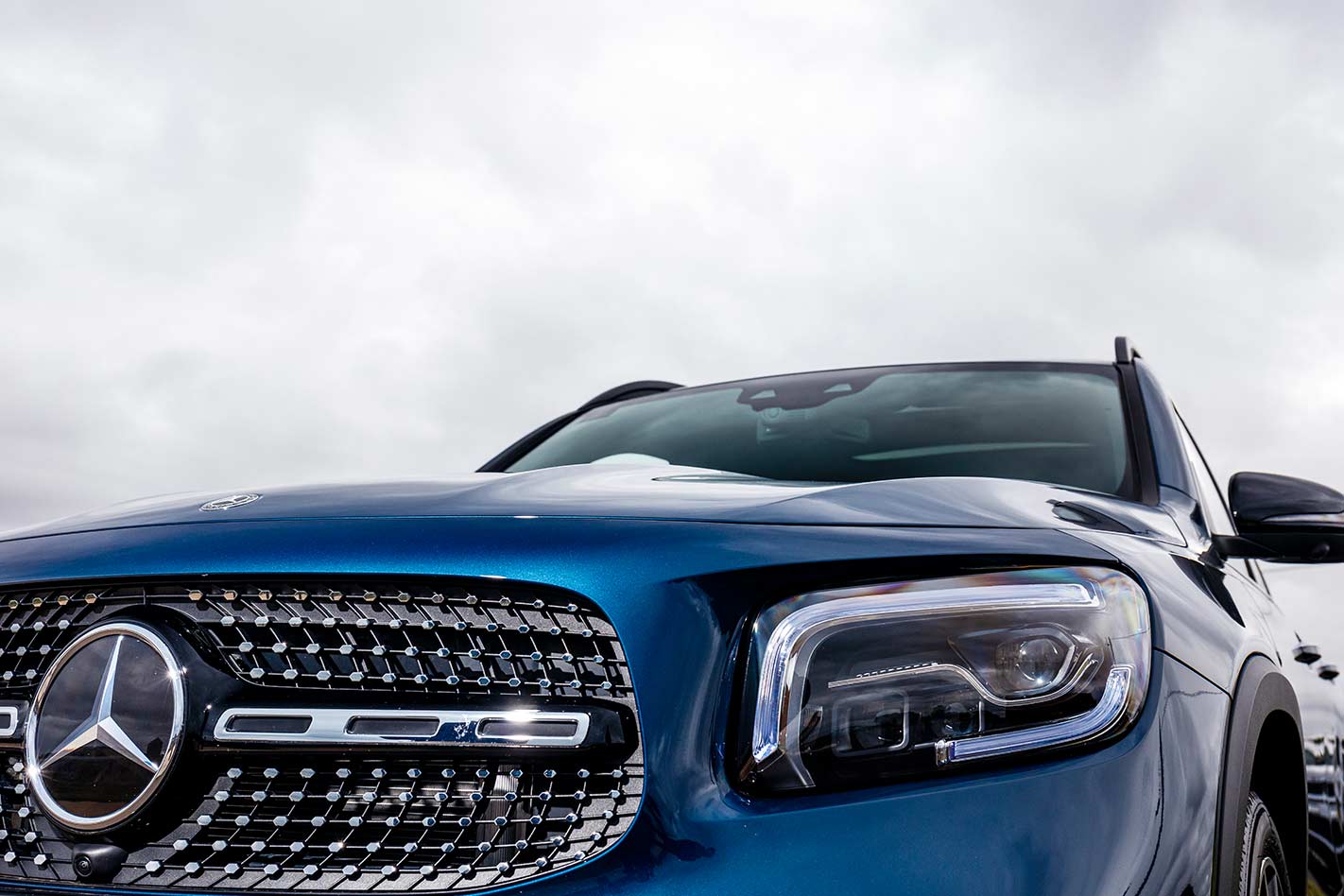
MERCEDES-BENZ GLB 250 4MATIC SPECS
Engine: 1991cc 4cyl, dohc, 16v, turbo Max power: 165kW @ 5500-6100rpm Max torque: 350Nm @ 1800-4000rpm Transmission: 8-speed dual-clutch L/W/H/WB: 4638/1834/1659/2829mm Weight: 1721kg 0-100km/h: 6.9sec (claimed) Economy: 7.7L/100km Price: $73,900 Plus: Well thought-out design; urban-friendly ride; luxury feel; punchy engine and slick dual-clutch gearbox Minus: Certain safety tech should be standard; options can increase already expensive base price rapidly
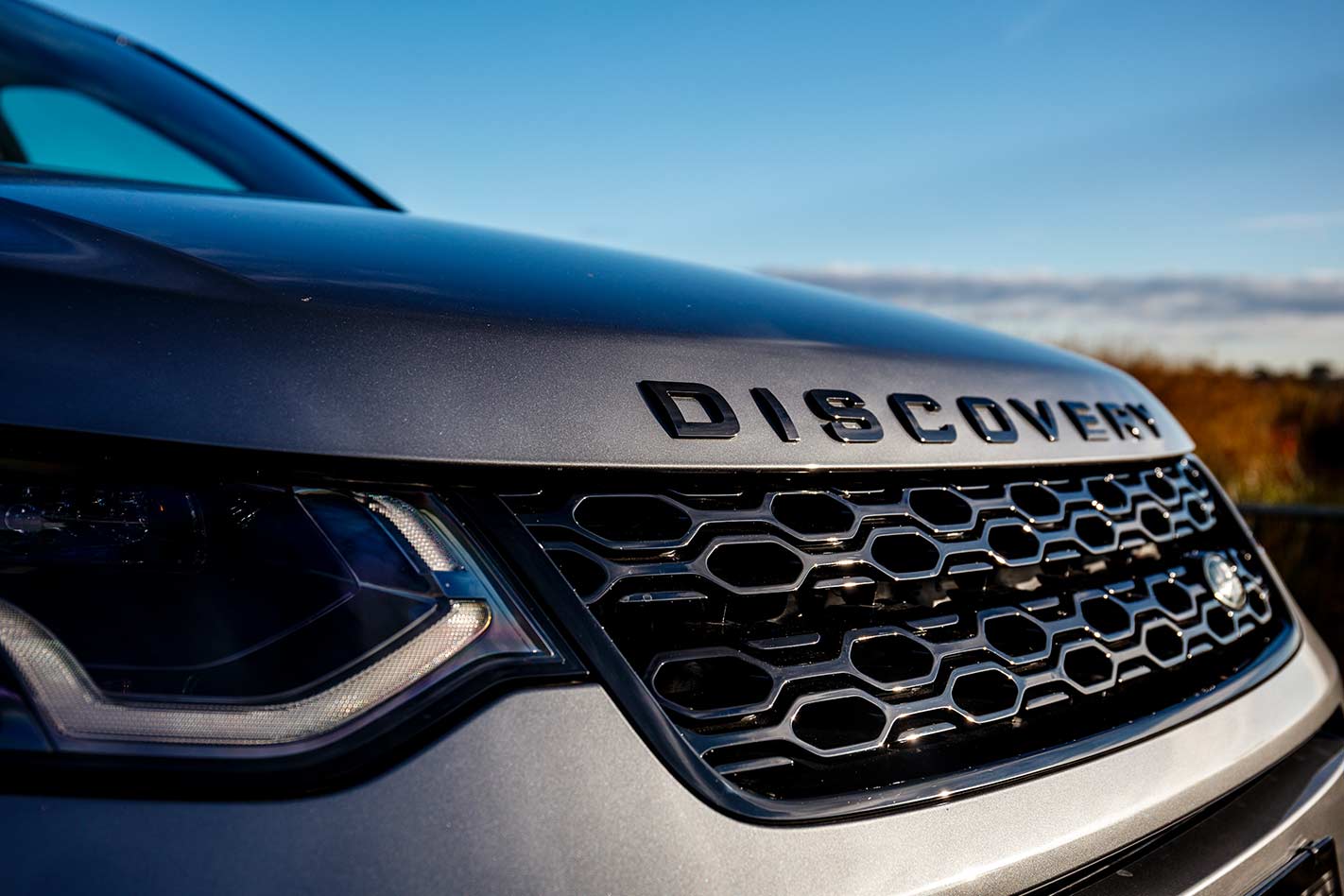
LR DISCOVERY SPORT R-DYNAMIC SE D180 SPECS
Engine: 1997cc 4cyl, dohc, 16v, turbo diesel Max power: 132kW @ 4000rpm Max torque: 430Nm @ 1500-3000rpm Transmission: 9-speed automatic L/W/H/WB: 4597/2069/1727/2741mm Weight: 1921kg 0-100km/h: 10.1sec (claimed) Economy: 5.9L/100km Price: $70,510 Plus: Torquey engine; impressive off-road ability and on-road composure; cheaper starting price Minus: Hard to hide age of platform; lazy gearbox calibration; no USB ports beyond front seats; odd design foibles
THE RIVAL
VW Tiguan Allspace 162TSI Highline: $52,490
Can’t stretch to the $70,000+ required for this pair? Volkswagen has a budget-friendly small-ish seven-seat option for you. The Tiguan was a COTY finalist for good reason, and this slightly stretched version adds an extra degree of practicality. A 2.0-litre turbo four-pot petrol sends 162kW/350Nm to all four corners via a seven-speed dual-clutch. It lacks the luxury parlour tricks of more expensive rivals, but is an earnest, grunty, and well-appointed choice.


